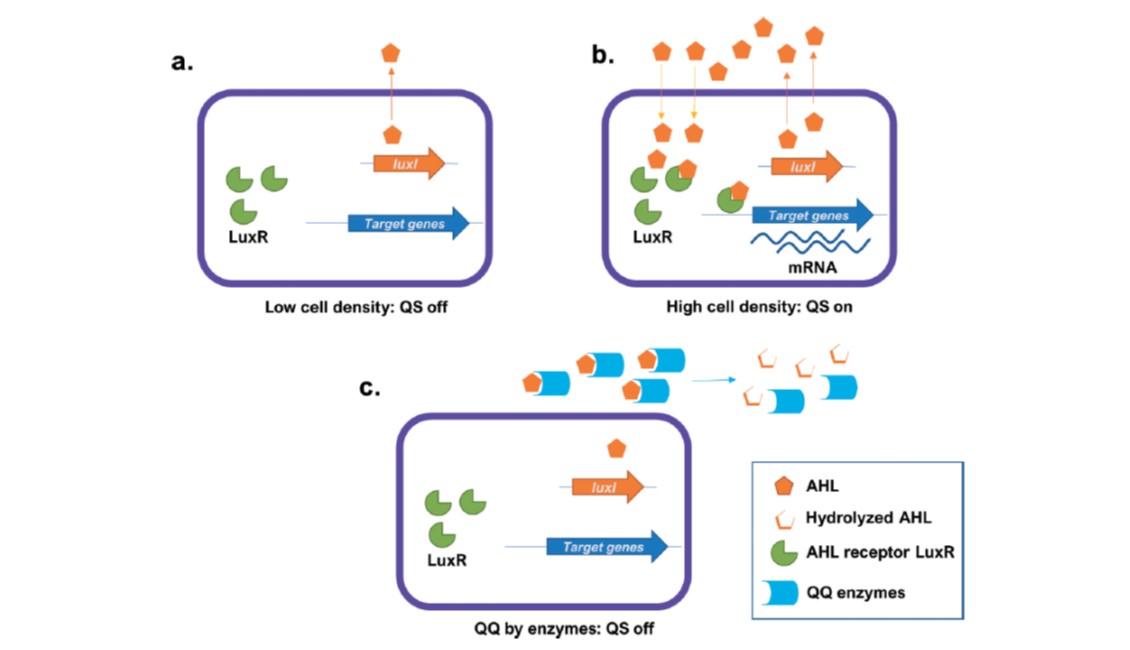Quorum sensing involves chemical signaling among bacteria related to the formation of biofilms and expression of virulence factors. The most common signaling molecules are acyl-homoserine lactones (AHLs), which cause these events to occur once they reach a critical threshold. Quorum quenching is a strategy employed by some bateria in which they produce enzymes that cleave these AHLs and can prevent biofillm formation and attenuate virulence. We are working with Dr. Mikael Elias in the BioTechnology Institute to study the effects of these enzyes in mouse models of disease to determine both their potential clinical efficacy as a treatment and also how specific enzymes can target specific species in a non-bactericidal manner. Preliminary data have indicated sex-specific differences in the activity of these enzymes in protecting against diet-induced obesity. Males were somewhat protected from weight gain when receiving our enzymes SsoPox (more narrow spectrum) or GcL (more broad spectrum), while females saw increased weight gain relative to a control (Figure). Both enzymes reduced compositional differences between sexes.

Figure from Rakesh Sikdar & Mikael Elias (2020): Quorum quenching enzymes and their effects on virulence, biofilm, and microbiomes: a review of recent advances, Expert Review of Antiinfective Therapy, doi:10.1080/14787210.2020.1794815
Current Experiments
-
Targeting Microbial Signaling to Determine Roles of the Intestinal Microbiota in Establishing and Maintaining Community Resilience
-
Funding: pending submission to NSF (c. March 2023).
-
- Quorum Quenching as a Therapeutic Lead for Colorectal Cancer
- Funding: Minnesota Colorectal Cancer Research Foundation